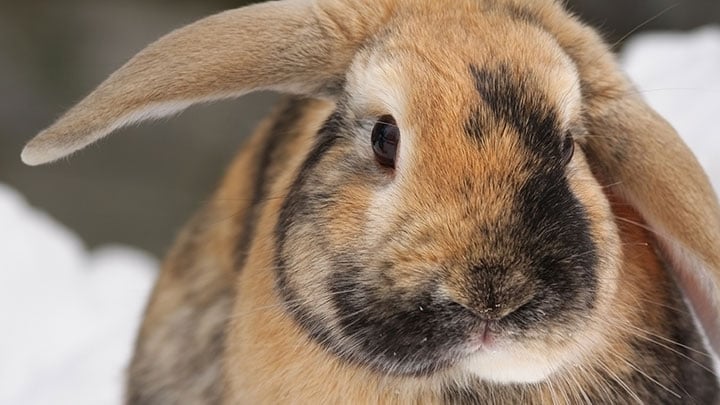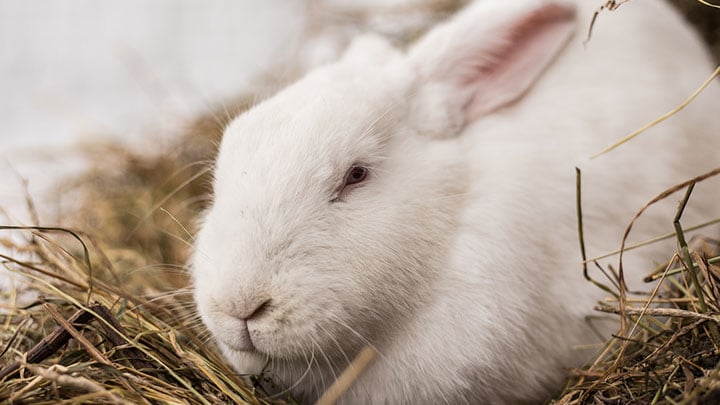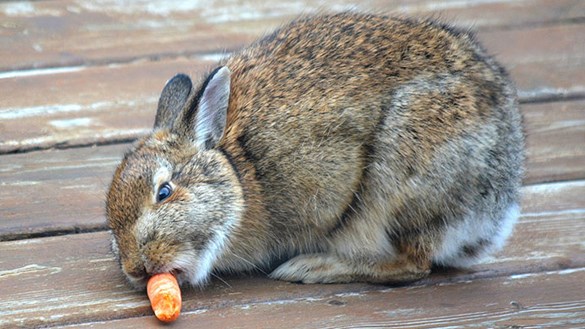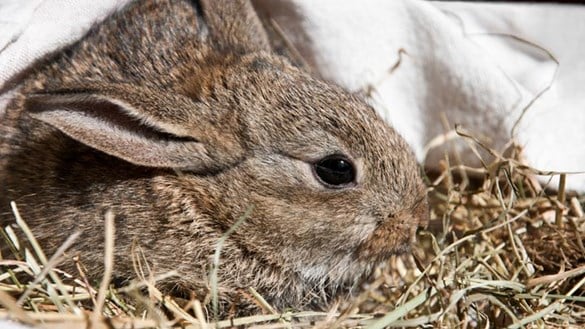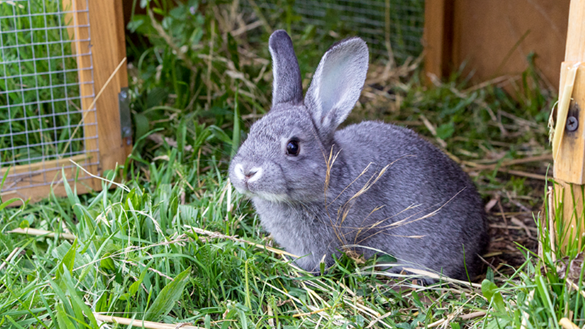Caring For Your Rabbit In Snow And Freezing Temperatures
Rabbits don’t do well in cold weather, and snowy conditions can put them at risk. Unlike other small animals, rabbits don’t hibernate so keeping them warm, dry and protected from the elements is crucial.
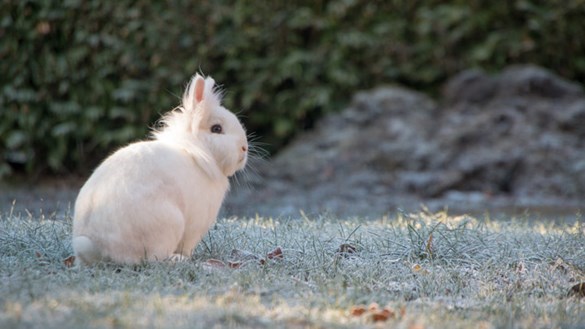
Keep rabbits warm, dry and safe
Keeping your outdoor rabbit warm and dry is the best way to make sure they’re happy when the temperature plummets and snow falls. Just like us, rabbits can suffer hypothermia and frostbite, so helping their body temperature stay at a comfortable level is key. You should check on your outdoor rabbit more frequently at this time of year.
When it snows, the best thing you can do for your rabbit is to bring their hutch inside until the weather warms up. A garage or garden shed provides enough shelter from the elements and predators. Don’t put them in a garage that you use to park your car though; the pollution can damage their delicate lungs.
Tips for keeping your rabbit warm outside
If you can’t bring them inside (or you think it might be too stressful), you’ll need to make a few changes to their hutch to fully snow proof it and provide some insulation.
Raise the hutch off the frozen ground
Raise the hutch off the frozen ground with bricks or wooden pallets (making sure it’s secure and won’t fall over) and lay a few old blankets, topped off with waterproof tarpaulin, on the roof to keep the heat in. Make sure there isn’t anything over-hanging the hutch as your rabbit is likely to nibble at it.
Invest in rabbit-friendly heat pads
Bunny-friendly heat pads are also available which can be warmed up in the microwave and placed in their hutch, this will release heat for a few hours; these are a great option for particularly cold nights. Don’t be tempted to use a hot water bottle as your rabbit could chew through it, and always ensure that you have left your rabbit enough space to get away from the heat mat if he gets too hot.
Don’t use blankets
It's not a good idea to use blankets inside the hutch, as they can get wet and freeze solid. Instead, be very generous with bedding and refresh it every day to make sure your rabbit isn’t sitting in a cold, damp hutch.
Keep the hutch warm inside
Line the hutch floor with a few layers of newspaper and add lots of extra hay and straw for your rabbit to bury into. Remember, in the wild, they would be tucked away in warm, underground burrows, so try replicating this environment by filling a cardboard box with straw – this will keep them warm and also let them exhibit their natural behaviours.
Hypothermia in rabbits
Hypothermia occurs when your rabbit’s body heat drops to extremely low levels, usually after being exposed to freezing temperatures or as a result of having wet fur in cold, windy weather.
Symptoms include shivering (although this will suddenly stop when their temperature reaches dangerously low levels), pale lips and gums, low energy and a loss of coordination. Hypothermia is an emergency, so if you spot any of these symptoms, bring them into the warm and contact your vet immediately.
Frostbite in rabbits
Frostbite can occur in very low temperatures which can freeze their extremities (the tips of their ears, nose and toes). Although not usually life-threatening, it could lead to hypothermia which can be fatal.
Skin can become very pale with a blue-white hue, due to the lack of blood flow, and ice can even form around the area. To prevent it from progressing and putting the local tissue at risk, apply a warm towel to the affected area. Don’t use a hairdryer or radiator to directly warm them up; this can cause burns and blistering. Instead, use tepid water to warm the area gradually, dry them thoroughly and speak to your local vet to check no additional treatment is required.
Feeding your rabbit in cold temperatures
Water bottles and bowls can freeze over in sub-zero temperatures, so they’ll need checking and refreshing regularly to make sure your rabbit has enough to drink. Insulated bottle covers help prevent freezing (although the spout can still become blocked) and, interestingly, placing a ping pong ball in their water bowl can stop it from icing over.
Rabbits will need more food to keep themselves warm in freezing temperatures. Provide plenty of hay, a portion of fresh vegetables and a small amount of high-quality pellets to ensure they have enough to eat. If you’re unsure how much they’ll need, ask your vet for advice.
Give your rabbits exercise
Rabbits still need regular exercise, despite the weather. Designate a secure area or room in your home to let your rabbit run around in during snowy weather. If this isn’t possible, clear the snow away from your outdoor run and avoid letting them out early in the morning or late at night when temperatures drop.
Consider older and very young rabbits
Just like humans, younger or older rabbits can suffer more in very cold temperatures. The same goes for rabbits with ongoing health issues, as their immune system is less effective in fighting off potential illness as a result of the cold weather.
If your rabbit falls into one of these categories, pay extra attention to their welfare over the snowy period and always ensure they have a warm, dry space to sleep and rest in.
If you’re still uncertain about caring for your rabbit in snow, ice, and freezing conditions, please talk to your vet.
For more advice on freezing weather care for your rabbit, speak to your local Medivet practice.

Medivet Healthcare Plan
On average our clients save an average of £225 with the Medivet Healthcare Plan.
Learn more


